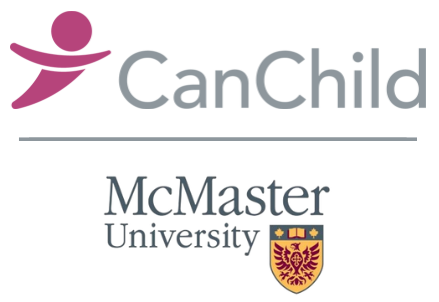Diagnoses
FAQ's about Measures
In what situations would I use the GMFM-88 instead of the GMFM-66?
- The GMFM-88 can be used for children with cerebral palsy or Down syndrome. The GMFM-66 is valid only for use with children with cerebral palsy . The GMFM-88 should be used when one is interested in determining dimension scores; the GMFM-66 does not calculate dimension scores.
- The GMFM-88 has many more items that describe and assess gross motor function of very young children or children whose highest motor abilities are in the dimension lying and rolling. For these children, the GMFM-88 will provide more descriptive information about motor status.
- The GMFM-88 should be used if one is interested in evaluating children with ambulatory aids and/or orthoses. The GMFM-66 has been developed using data from children who did not use aids and orthoses.
- To score the GMFM-66 you need the GMAE scoring program. If you don’t have access to the scoring program or a computer you would need to use the GMFM-88. It would still be wise to score the GMFM-88 with the “Not tested” category so that the information could be entered into the GMAE program at a later time.
In what situations would I use the GMFM-66 instead of the GMFM-88?
- The GMFM-66 is valid only for use with children with cerebral palsy . The GMFM-88 can be used for children with cerebral palsy or Down syndrome.
- In situations where assessment length is a factor, the GMFM-66 takes less time to administer than the GMFM-88 and does not require all items to be assessed to get an accurate estimate of a child’s score.
- To chart within-child change over time or to compare patterns of change between children, the GMFM-66 will provide a more meaningful assessment of change because the items are ordered by level of difficulty. Furthermore, change over and above measurement error is easily determined by examining the extent of overlap of the 95% confidence intervals produced by the GMAE.
C an you use the GMFCS to interpret the outcome of the GMFM?
an you use the GMFCS to interpret the outcome of the GMFM?
By plotting GMFM-66 scores by GMFCS level, estimations regarding future motor capabilities for children with cerebral palsy (similar to height and weight growth charts) can be made. Because GMFCS level and age are the major determining factors of gross motor function in children with cerebral palsy, knowledge of these two factors can enable one to plot a child’s GMFM-66 score, and to see how close the measured GMFM-66 score is to the ‘expected’ (average) motor growth curve value for other children of the same GMFCS level. It is important to remember that the ‘line of best fit’ on the motor growth curves is not the actual ‘true’ value of every child in that GMFCS level because there is variation in patterns of gross motor function among children within each GMFCS level.
However, it must of course be recognized that there are many potential sources of error. These include how well the GMFM assessment was done by the assessor; how well the child performed relative to their typical ability; and whether the GMFCS level assigned is accurate (something that is harder with children under age 2 years).
What’s the more valid measure – the GMFM-66 or the goal areas of the GMFM-88?
The GMFM-66 is the more valid measure. The GMFM-88 goal areas arising from the dimension scores are no longer available when using the GMFM-66. The item map produced by the GMAE using the GMFM-66 scores displays the items in order of difficulty, making it possible to identify relatively easier and more difficult “next steps’.
How do the motor growth measures link with the International Classification of Functioning, Disability and Health?
Information from the GMFM-88 or GMFM-66 and the motor growth curves assist with assessment and intervention at the ICF dimension “activity/activity limitations” (execution of a task or action by an individual). The GMFM-88 or GMFM-66 do not provide information at the dimension of ‘impairment’ in body structure and function, nor does it describe how a person uses their gross motor function for participation in daily life.
1 OUT OF EVERY 400
individuals in Canada are diagnosed with Cerebral Palsy and it is the most common physical disability in children.
CanChild is proud to be a member of the Cerebral Palsy Integrated Network (CP-NET), a program designed to improve our understanding of CP and accelerate the development of new treatments. To learn more about CP-NET please follow the link below:
If I Knew Then What I Know Now
Some of the parents who participated in the Adolescent Study of Quality of Life, Mobility and Exercise (ASQME Study) told us "If I knew then what I know now, I would have done things differently". We were interested in exploring this theme further and so we conducted qualitative interviews with 9 parents participating in this study in order to learn from them about their experiences parenting a child with cerebral palsy from early childhood into young adulthood. From the information we gathered in these interviews we developed a tip sheet that might be helpful for other parents caring for children and youth with cerebral palsy.
The Motor Growth Measures
CanChild researchers have developed a number of measures and tools related to gross motor function and performance for children with cerebral palsy. These include:
- Gross Motor Function Classification System - Expanded & Revised (GMFCS E&R), including the Family Report Questionnaire, and the Descriptors & Illustrations
- Gross Motor Function Measure (GMFM), of which there are 2 versions, namely the GMFM-88 and the GMFM-66
- Quality FM
- Motor Growth Curves

